Healthy and delicious kollu rasam recipe! You can enjoy this easy-to-make kollu rasam as a soup or serve it with rice as an accompaniment. Check out how to make this kollu rasam or horsegram soup with detailed step-wise pictures.
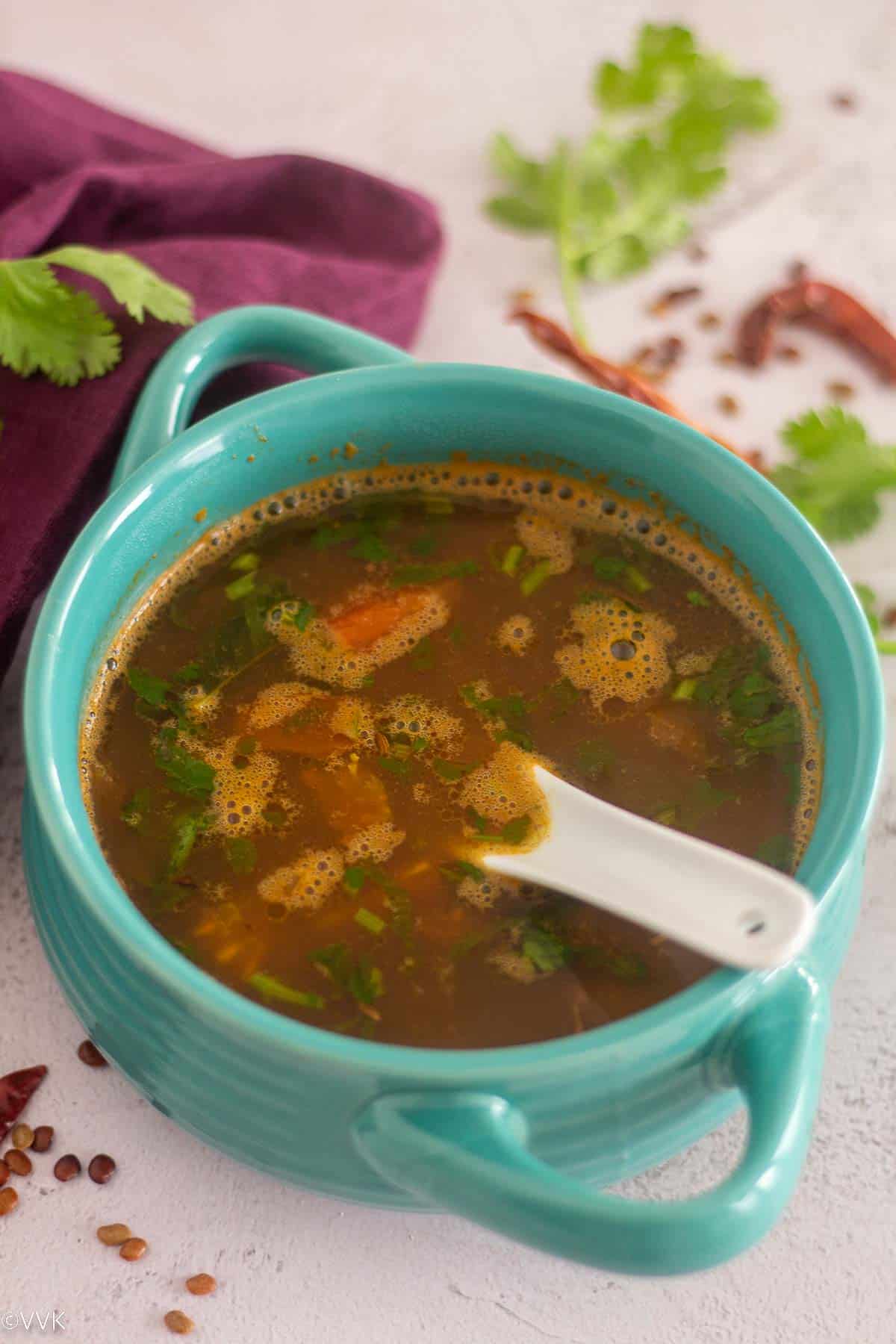
Rasam is a South-Indian style thin soup made with or without lentils. This horsegram soup, or kollu rasam as we say in Tamil, is a proof that healthy recipes can be delicious too.
Jump to:
Horsegram, kollu in Tamil and kulith in Hindi, is one of our favorite lentils and a staple in our household. You can find many kollu recipes on my blog, like kollu dosai, kollu sundal, and even kollu biriyani, popularly known as ulava charu biryani. I will share a few more kollu recipes below; please check them out.
I have already shared the kollu rasam podi (spice mix prepared with horsegram that we can use for preparing rasam) and kollu rasam recipe with that podi. But this rasam is slightly different. We use regular rasam powder to spice up the rasam, but instead of toor dal (which we typically add for paruppu rasam), we add cooked and mashed horsegram and horsegram stock for this rasam.
The recipe might sound lengthy, but it’s straightforward and not so complicated. It’s definitely a beginner-friendly recipe, and do give it a try. Once you have the cooked horsegram and the stock ready, you can make this rasam quickly. Now let’s get straight into the ingredients and procedure. If you love rasam recipes like me, check out my rasam archives, where you can find over 20 plus rasam recipes.
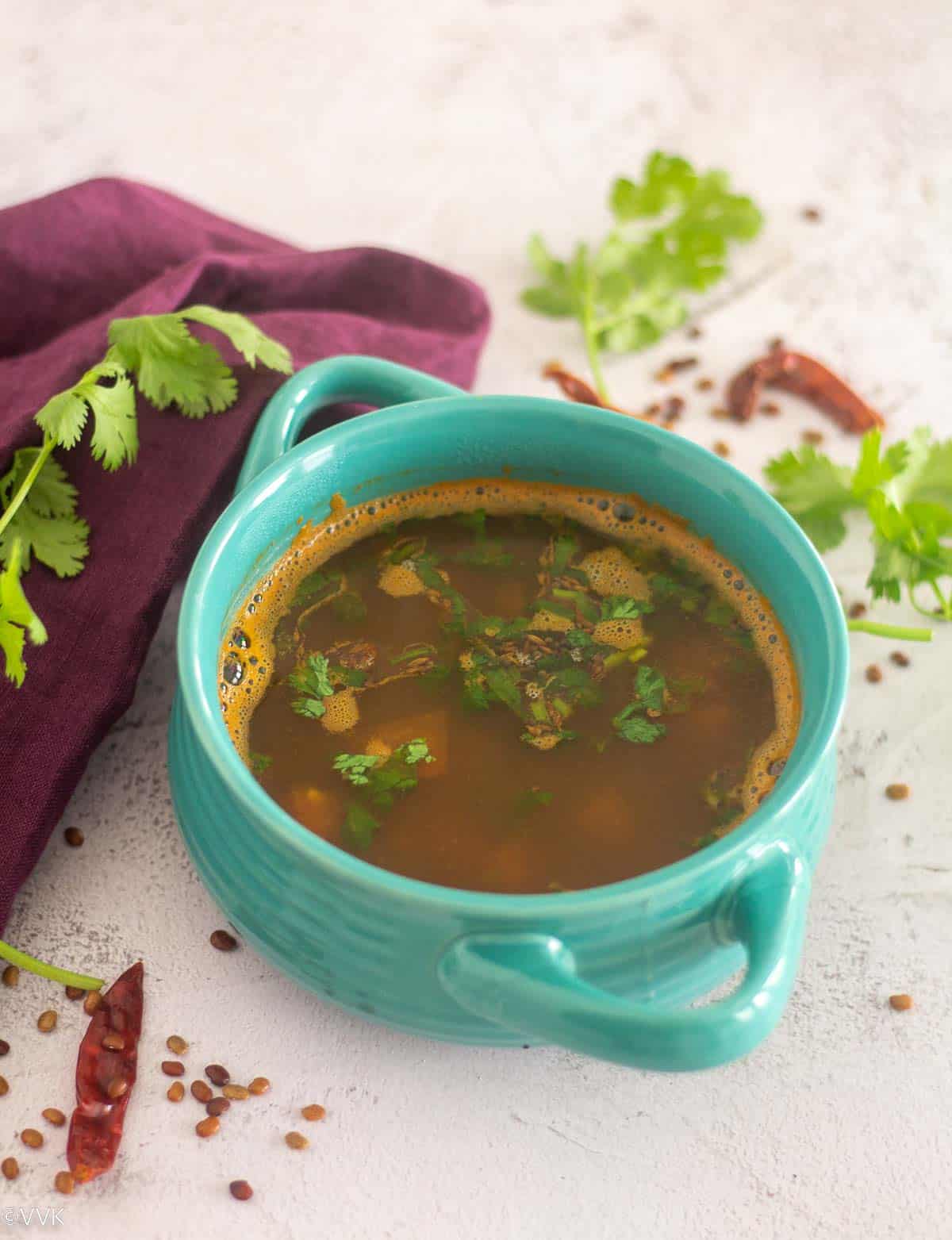
Ingredients required
Horsegram/kollu is the key ingredient for this recipe. We roast the lentils, soak them for about 20 minutes, and pressure cook and use them to make the rasam.
I used homemade rasam powder for this recipe. You can also use store-bought rasam powder. I recommend 777 brand or grand sweets brand rasam powder. (Not sponsored)
We also need other typical rasam ingredients like tomato, tamarind paste, cilantro, curry leaves, garlic, turmeric powder, salt, and water.
We need ghee or oil, mustard seeds, cumin seeds, and asafoetida to temper.
Please check the recipe card for exact measurements.
Dietary specifications & serving suggestions
This horsegram rasam is a nut-free soup recipe. Skip ghee, use oil to temper, and use gluten-free asafoetida or skip that for a gluten-free version.
You can enjoy this rasam like soup or serve it with rice, kootu or poriyal/dry curry for a filling lunch or brunch.
This rasam refrigerates well. So far, I have stored it for three days. Alternatively, you can roast and cook the horsegram and store the stock and lentils separately. When needed, you can make the rasam.
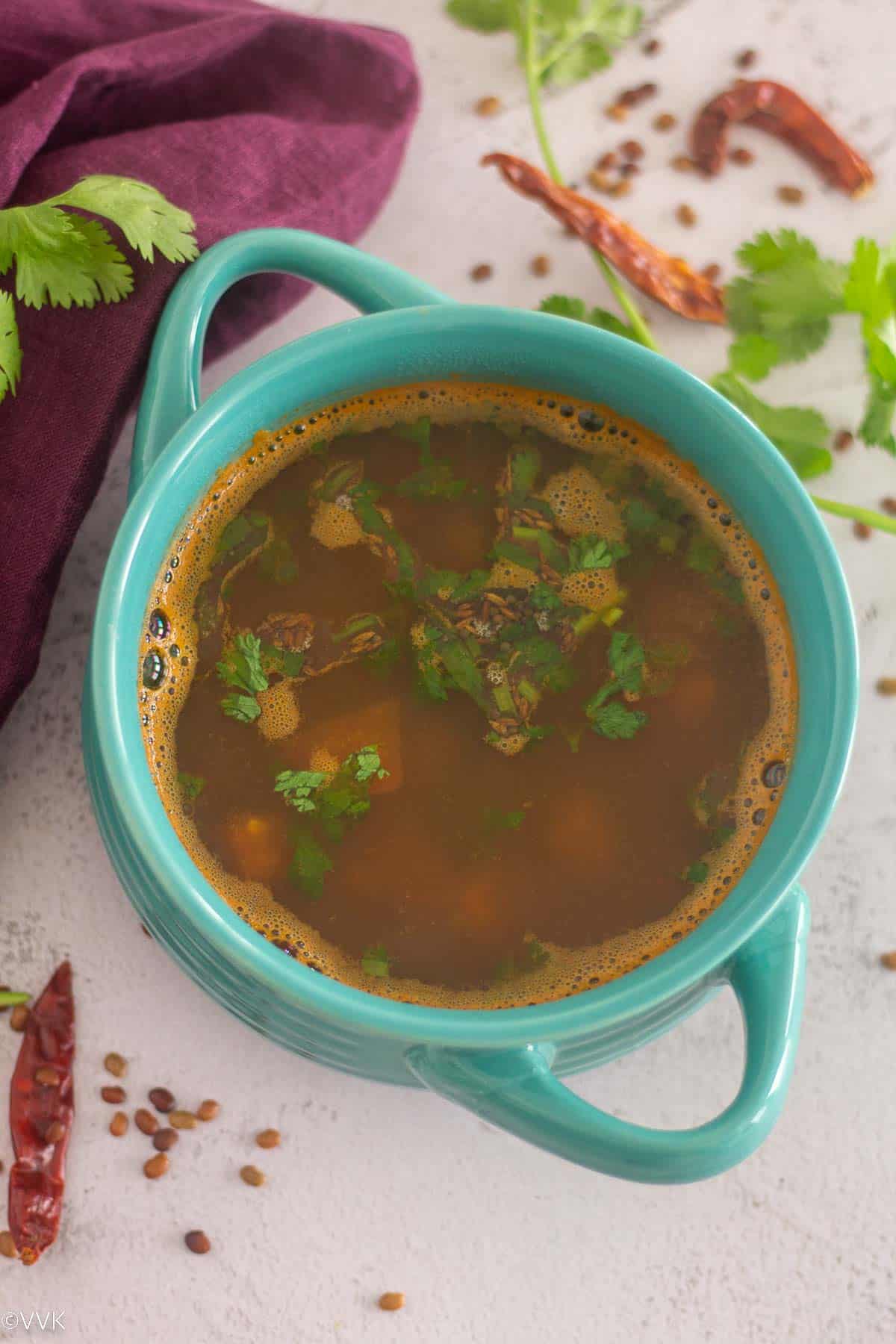
How to make kollu rasam
Roast the horsegram and pressure cook.
- Heat a small pan or kadai and add the horsegram.
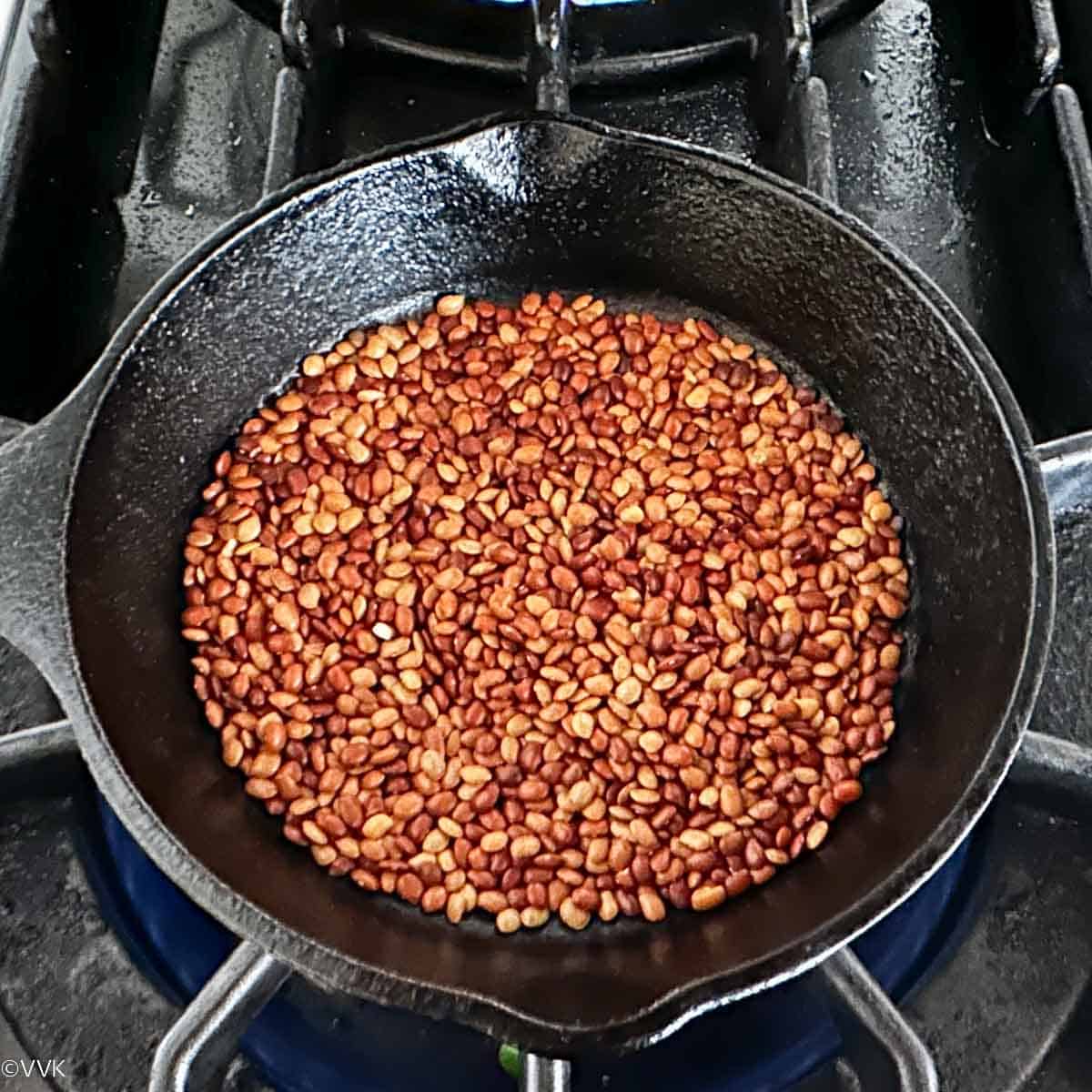
- Dry roast it over medium-low heat (on a number scale of 4) for about 6 to 8 minutes or until the horse gram turns deep brown/red. As you can see in the step 1 picture, horse gram lentils come in different shades of brown. The light brown ones should turn golden brown, and the darker shade lentils will turn deep brown. Don’t let the lentils turn black. As you roast, you will hear the popping sound; you can turn it off at that stage and always roast in medium-low or even low heat.
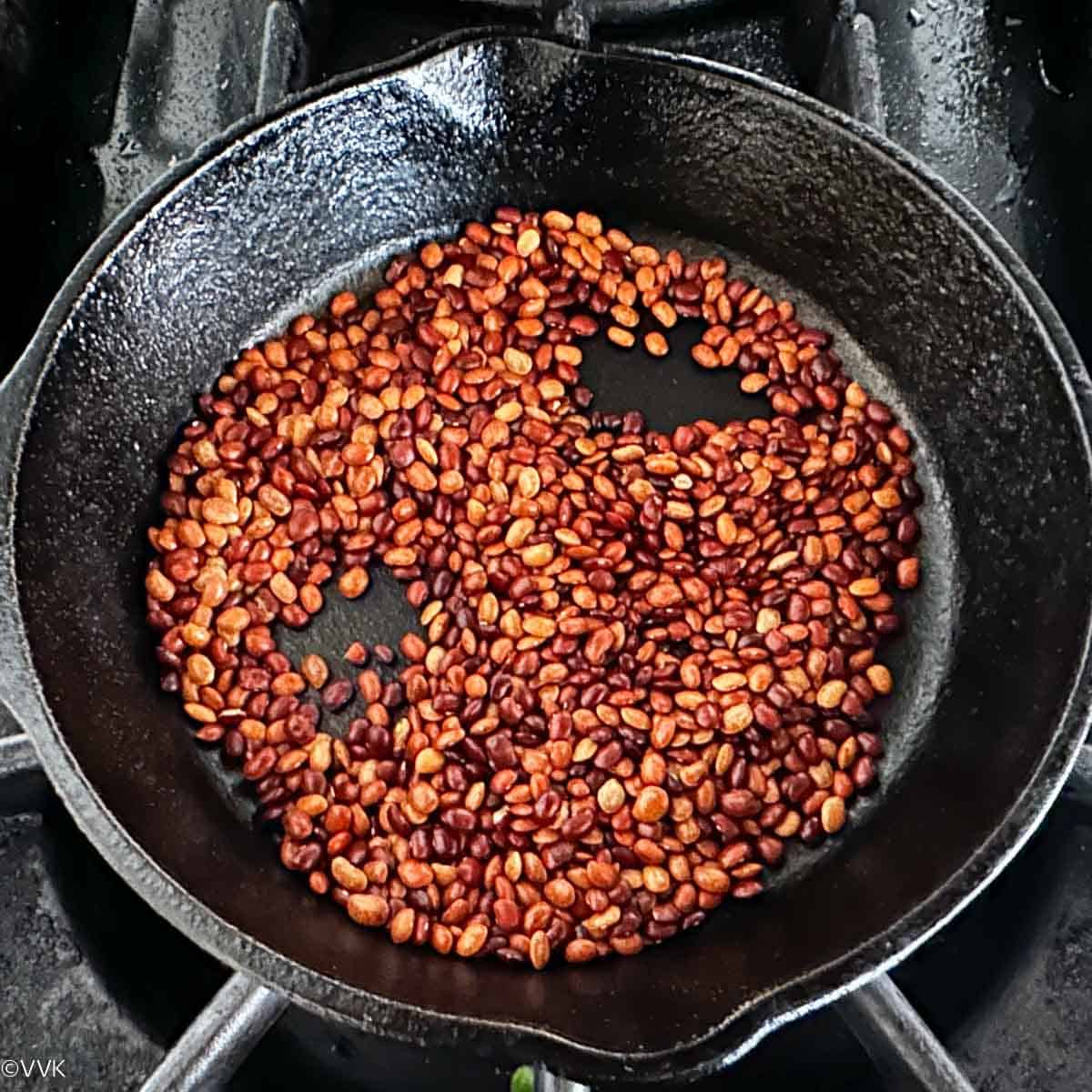
- Transfer the roasted dal to a bowl and add water. Let it soak for about 15 mts.
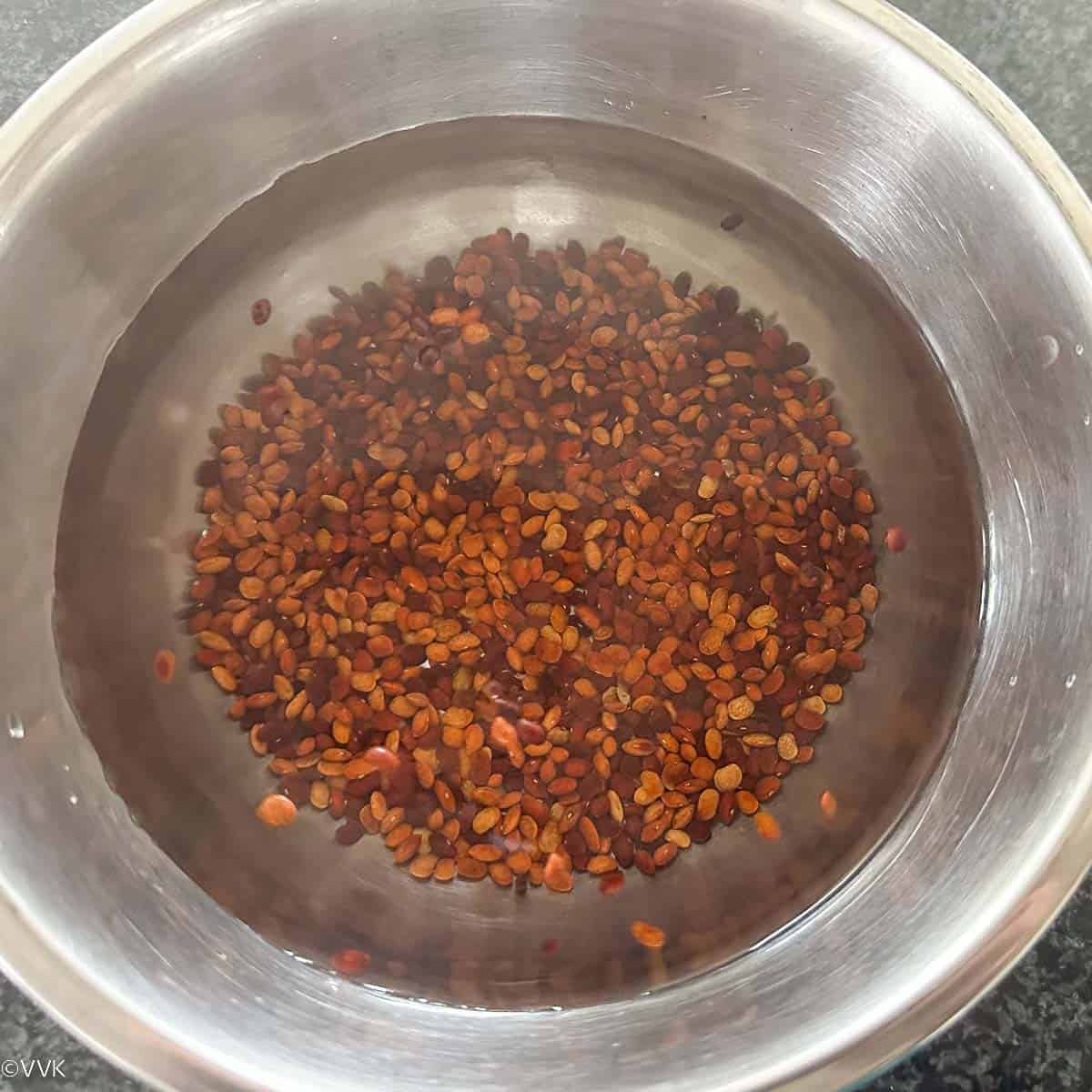
- Discard the water and add 2 cups of fresh water, and pressure cook the roasted horsegram for 4 to 5 whistles. Let the pressure subside naturally and set it aside.
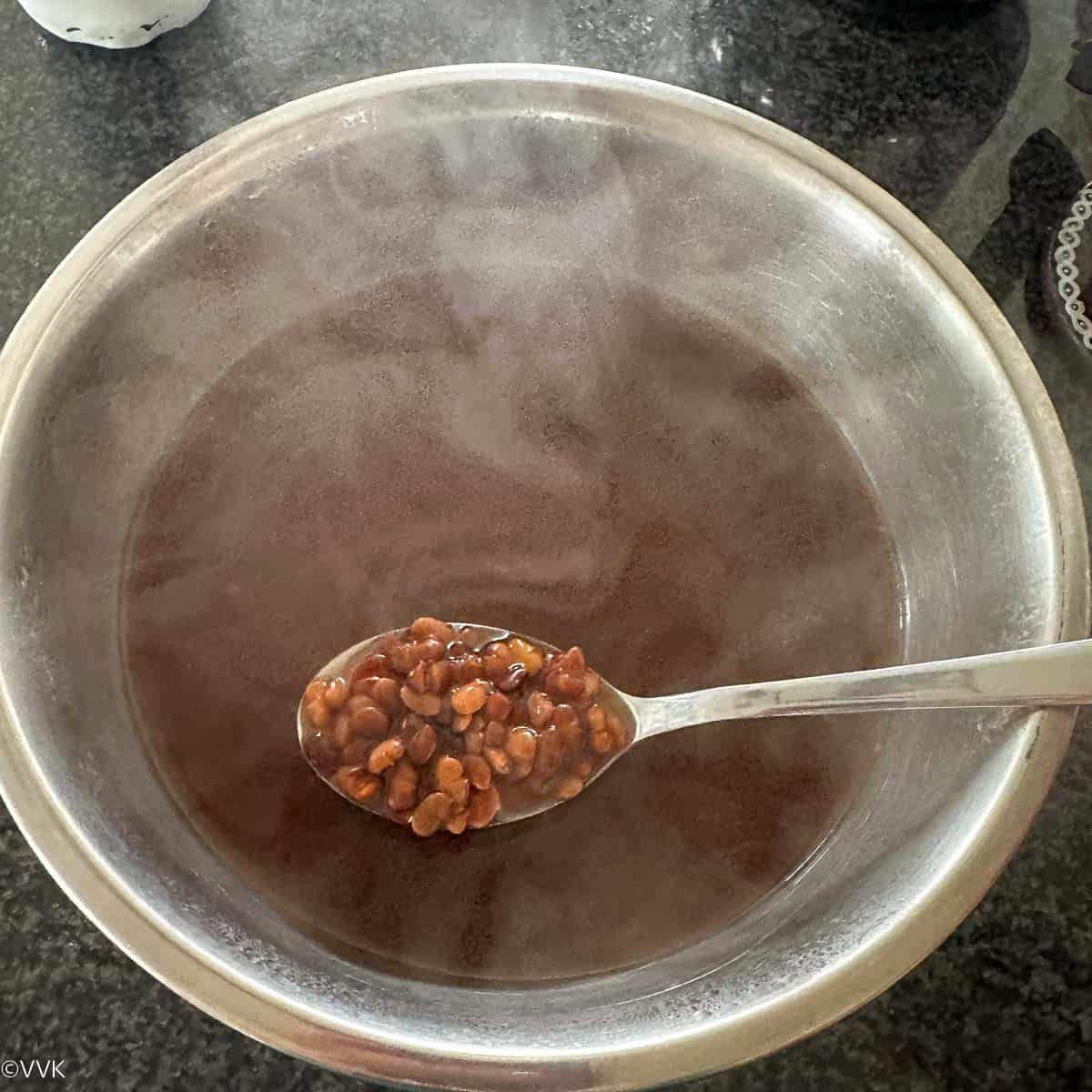
- Reserve the stock water. Take two to three tbsps of the cooked dal and grind it coarsely like the one below.
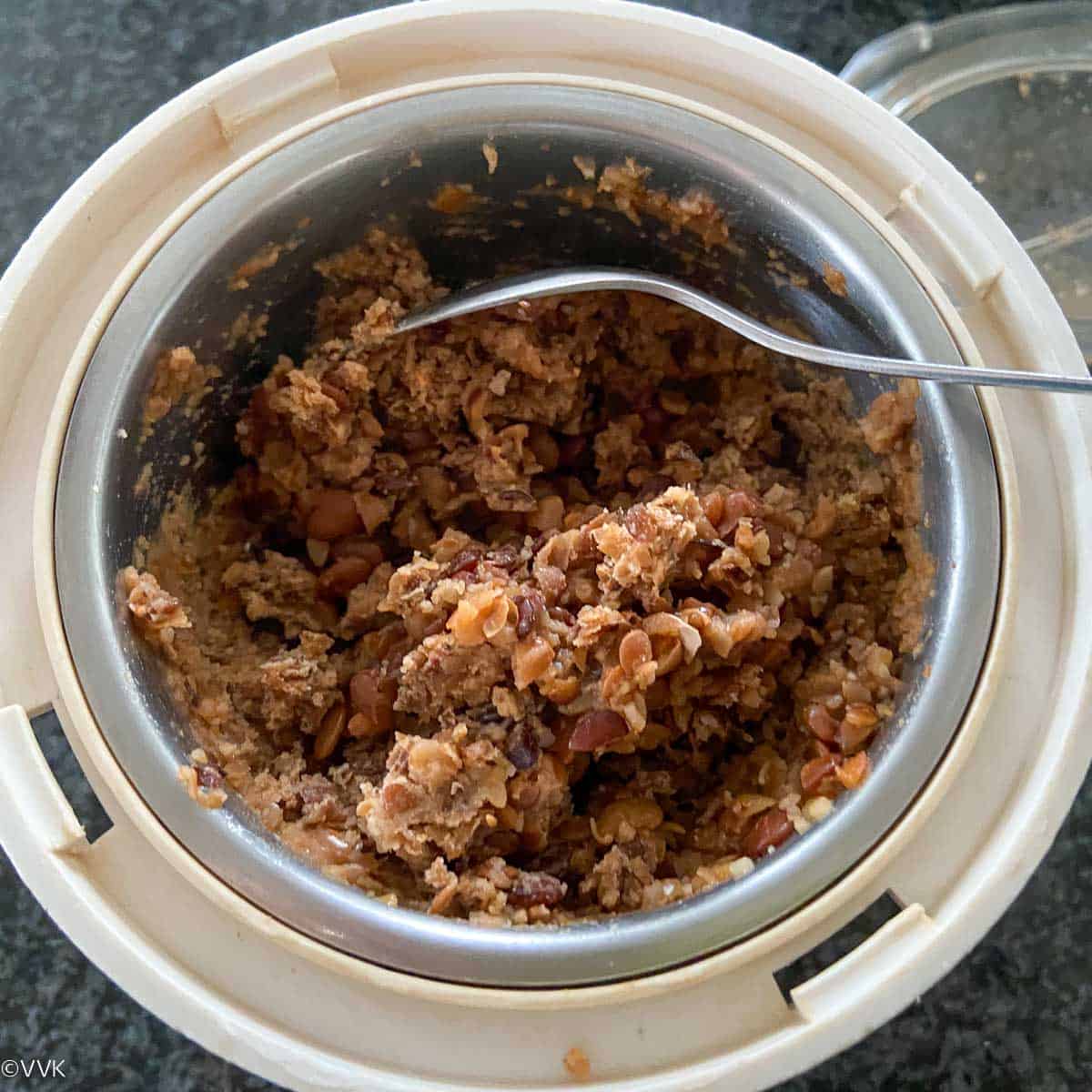
Prepare the rasam
- Add the chopped tomato, crushed garlic, tamarind paste, salt, rasam powder, curry leaves, and turmeric powder.
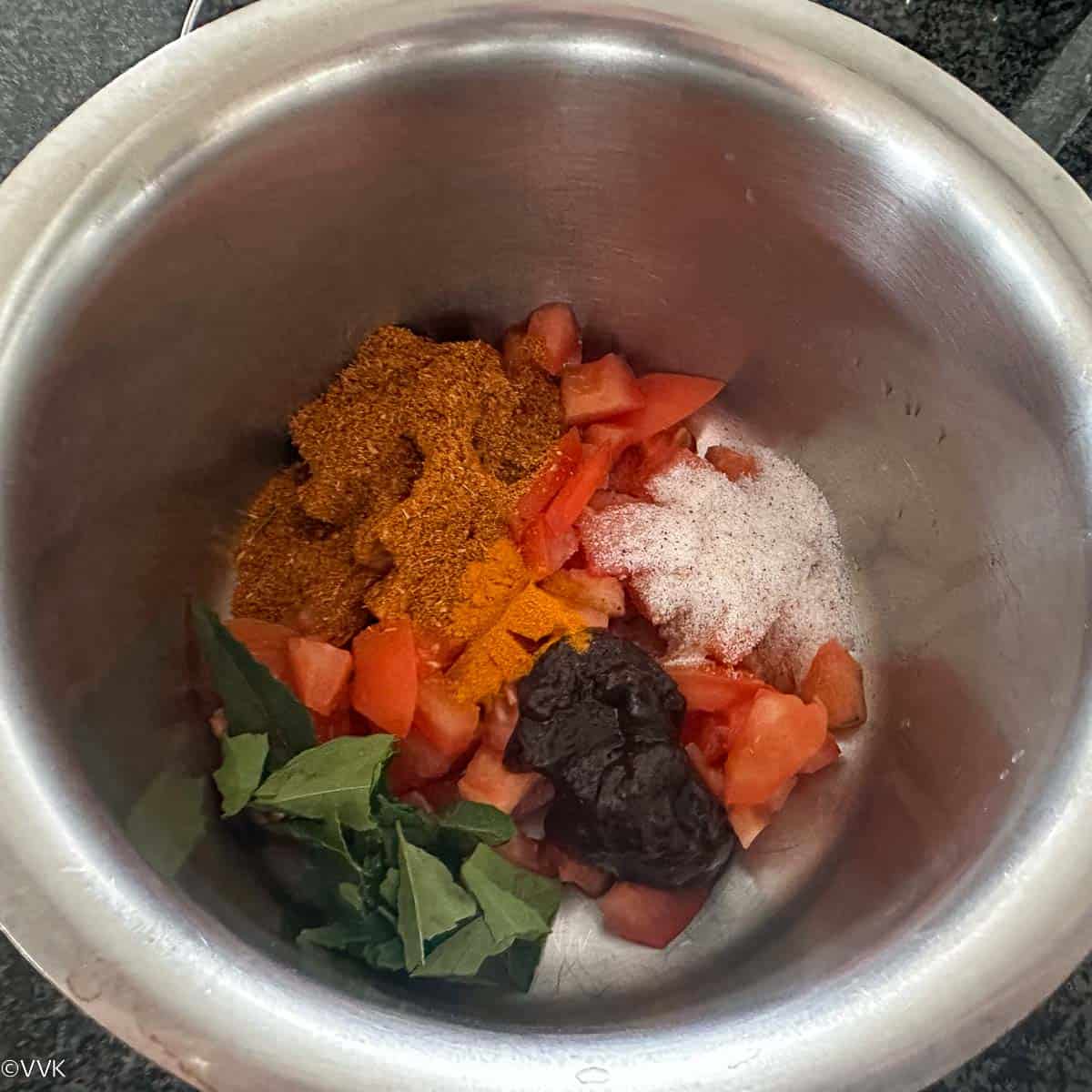
- Add 2 cups of water and mix well. Ensure you mix the tamarind nicely and that there aren’t any lumps.
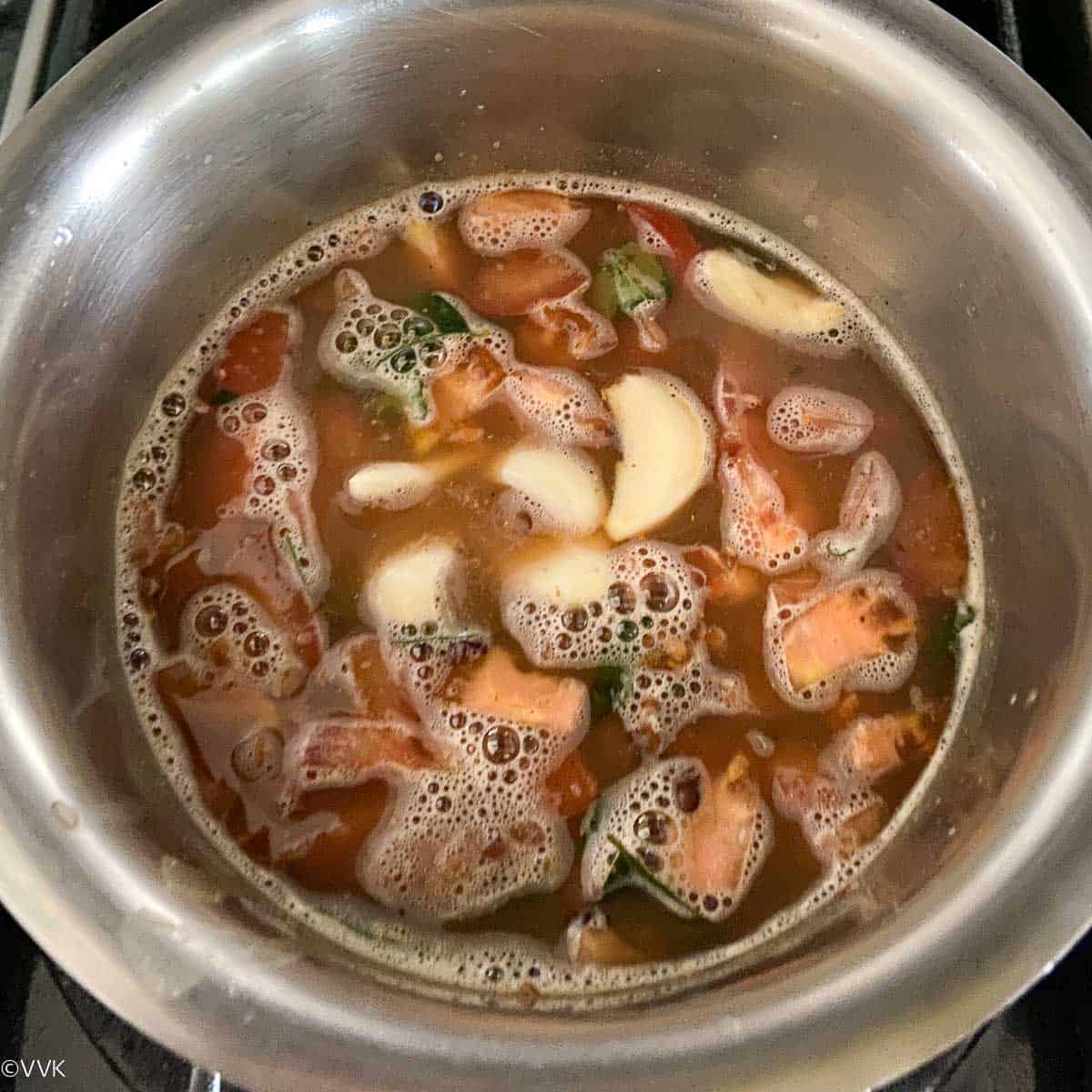
- Bring this mixture to a gentle simmer.
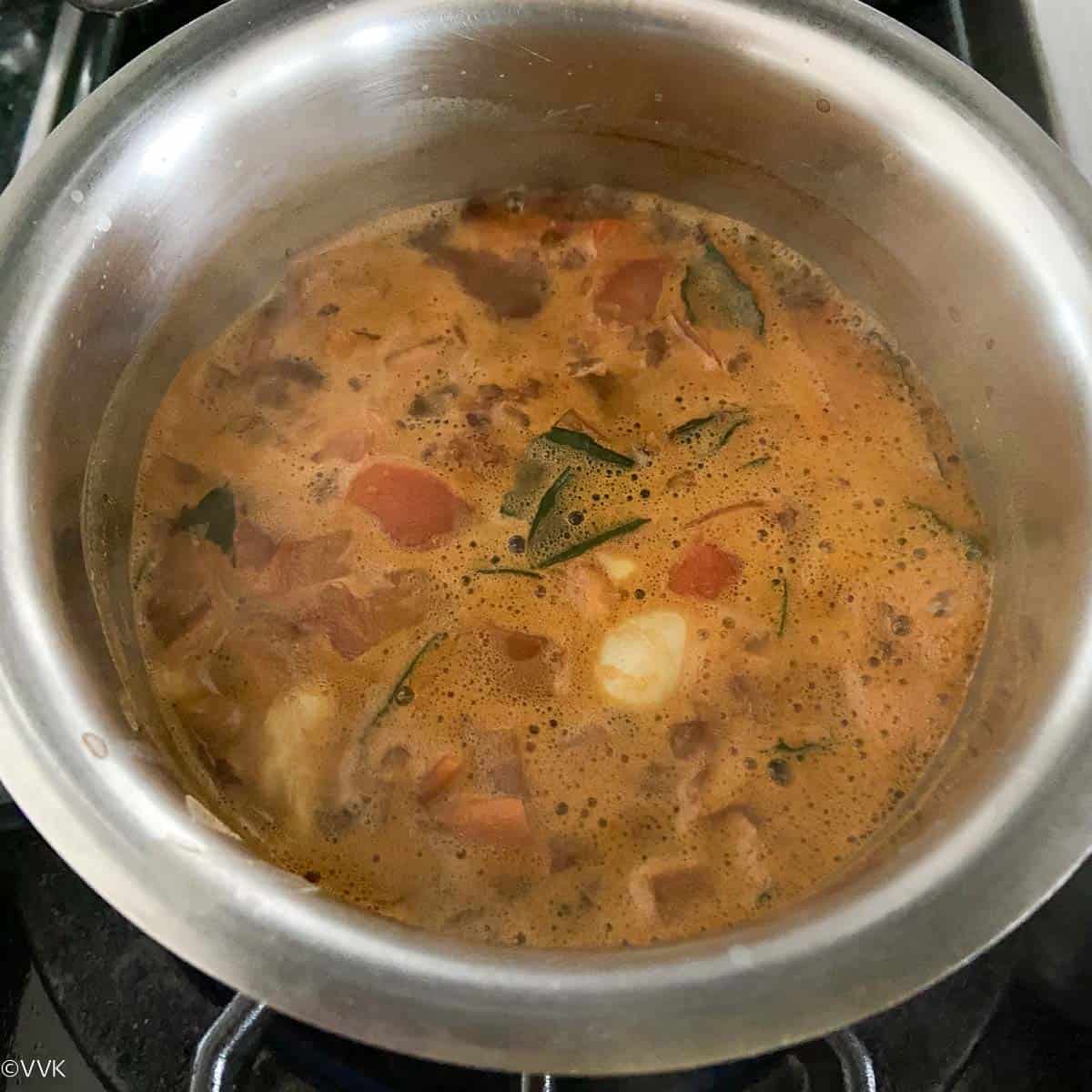
- Add half of the chopped cilantro and mix.
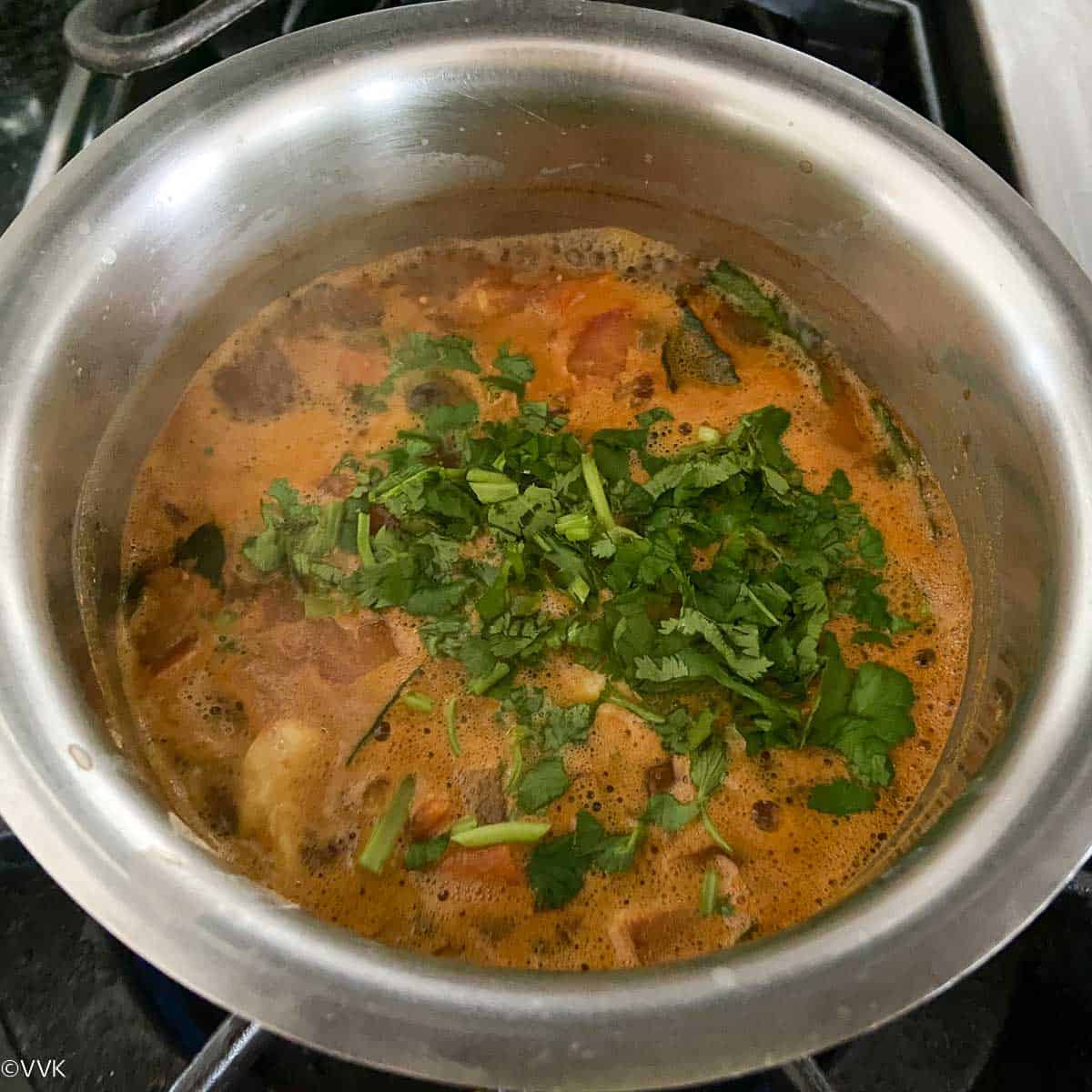
- Let the rasam simmer for two more minutes.
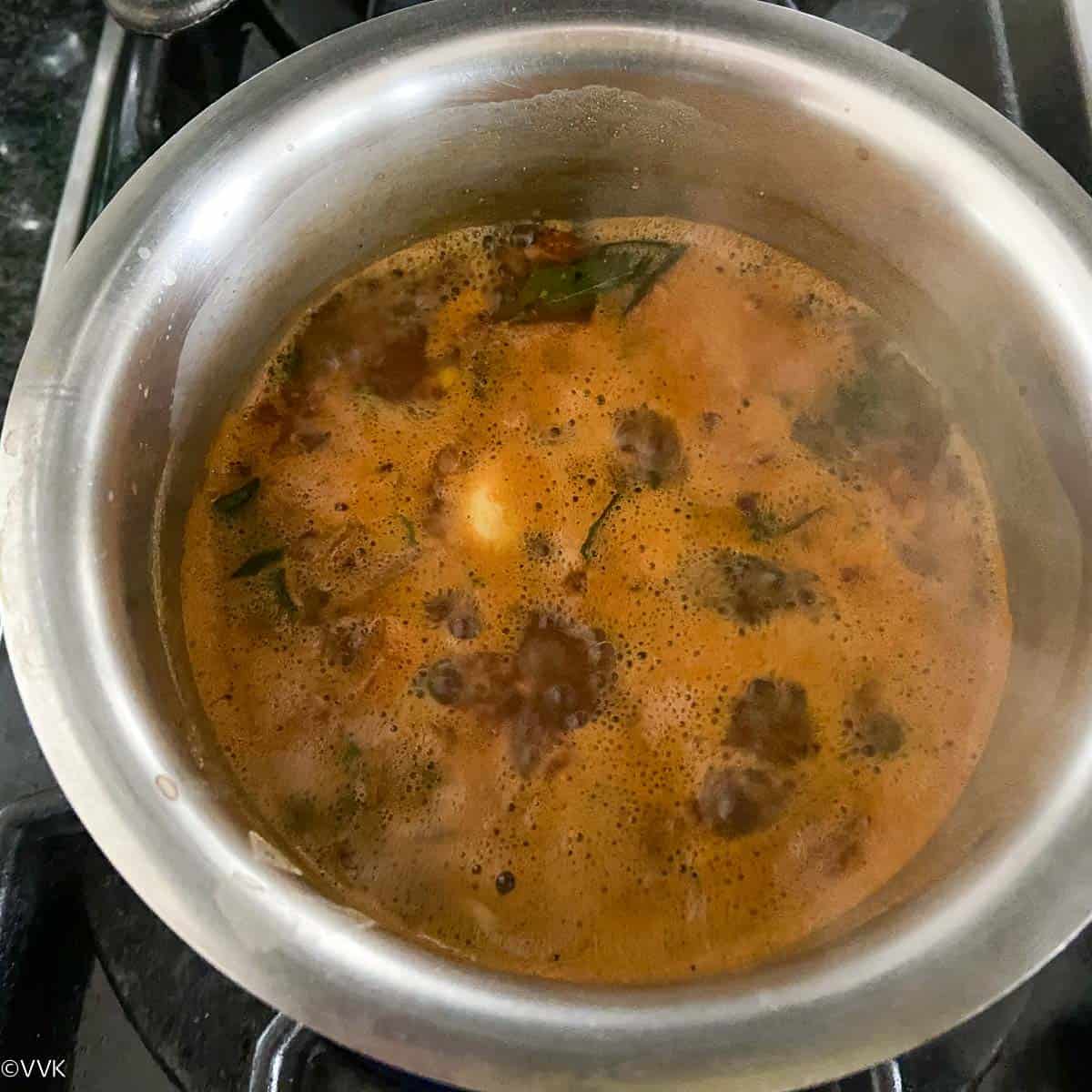
- Now add the ground horsegram, stock water (the water we used for cooking the horsegram), and ½ cup of water. Mix well. Check for taste, and if needed, add salt. At this stage, you can add jaggery if using.
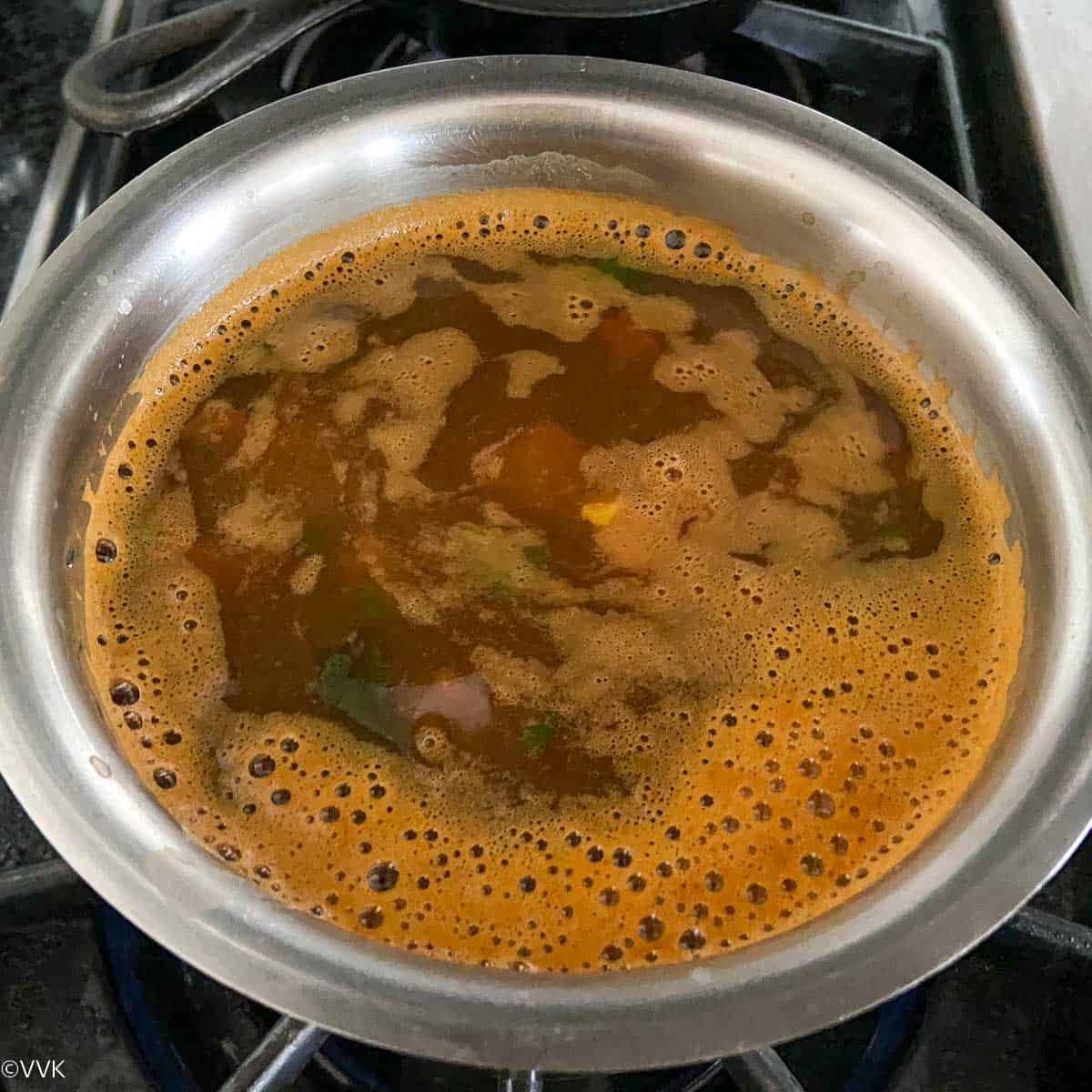
- Reduce the heat to medium-low and simmer the rasam until it’s frothy. Do not boil the rasam after adding the dal.
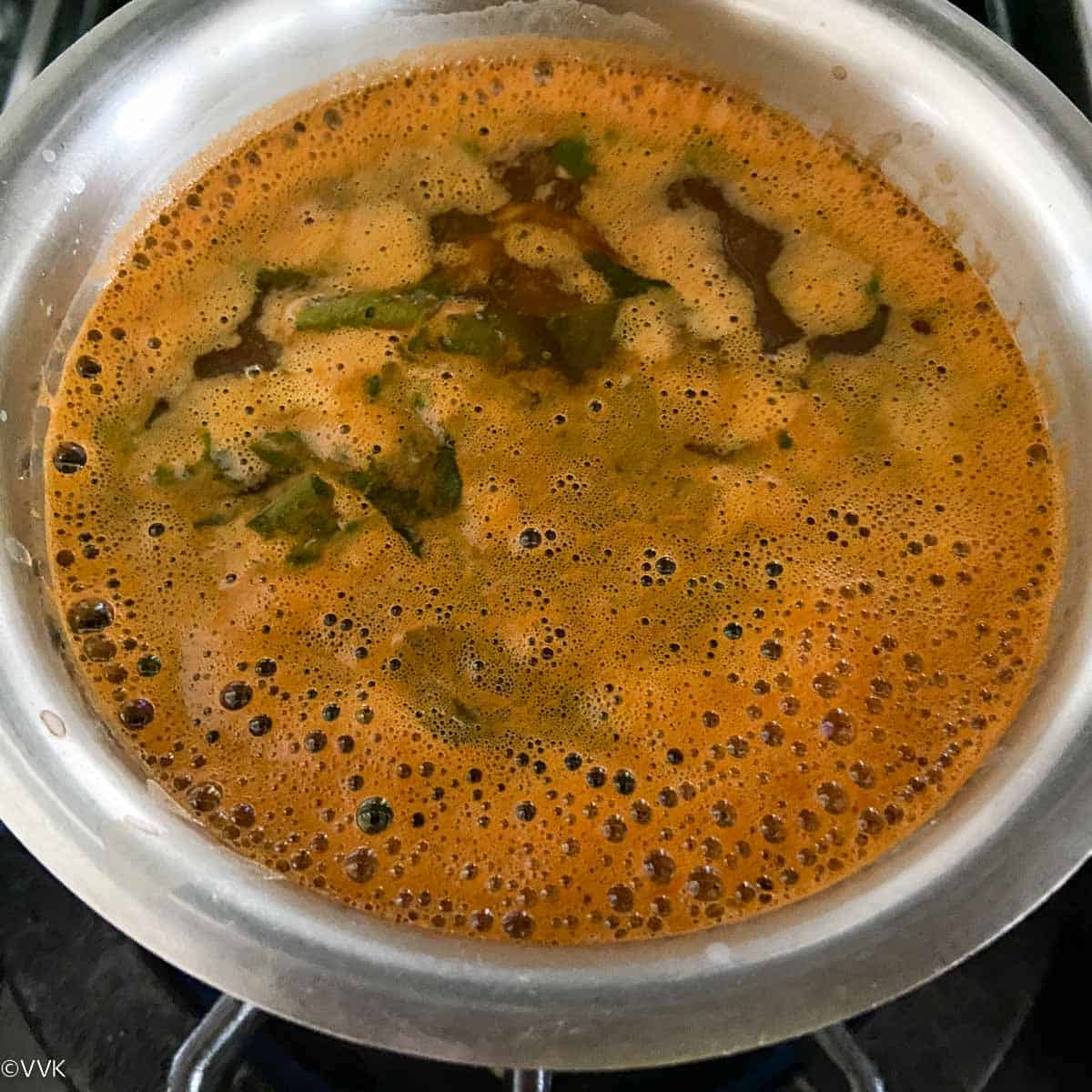
- Once the rasam becomes frothy like below, turn off the heat. In a separate tempering pan, heat the ghee or oil, and when it’s hot, add the mustard seeds, cumin seeds, and asafoetida. When the mustard seeds splutter, add them to the rasam. Add the remaining cilantro and cover the rasam. Wait for 5 minutes for the cilantro and tempering flavors to infuse. Then enjoy the rasam warm.
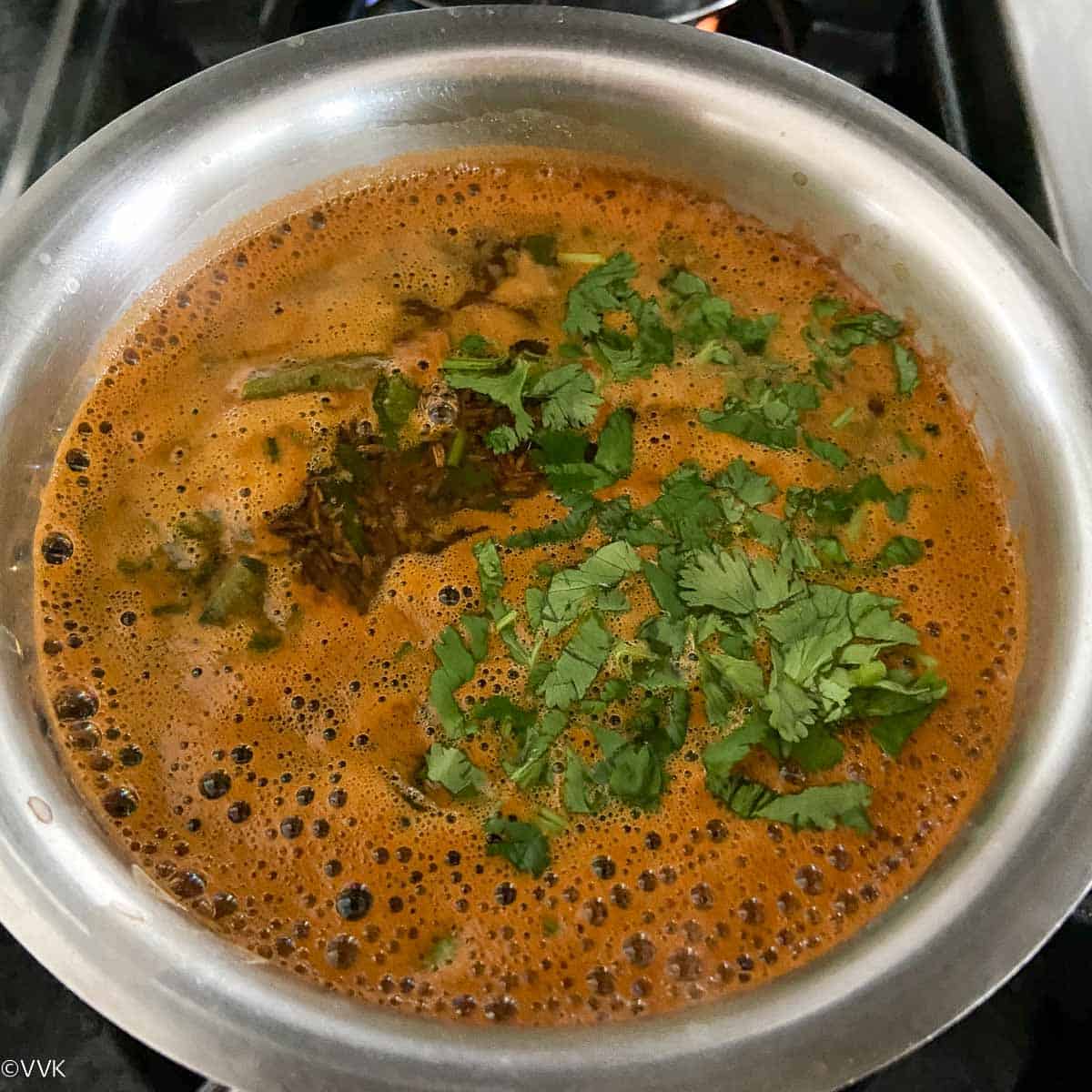
Recipe Notes
- If you use tamarind flesh, you can use a small lime-sized tamarind. Soak it in 1 cup of water and extract the juice. Use this juice along with water.
- I used only 2 tbsp of the cooked dal for this rasam. You can use the full measure of cooked dal, but it will yield a thick rasam. So I always end up using two to three tbsp of the dal. But if you use the entire dal measure, increase the salt and add ½ tsp of ground pepper.
- Garlic is optional. Also, you can add a dash of ground pepper for the additional kick.
- Adjust the salt and rasam powder measure to taste.
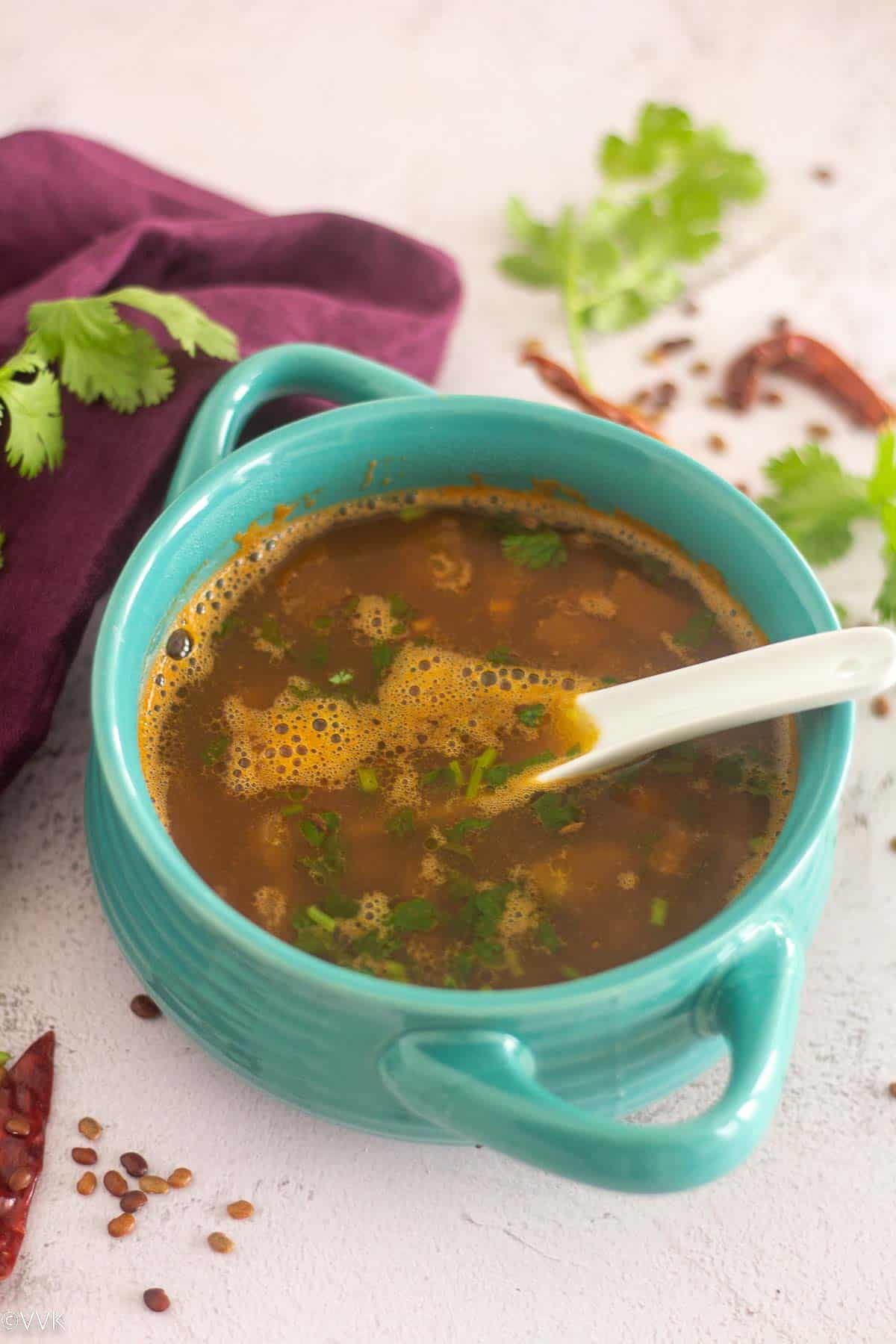
Explore other horsegram recipe
PS – If you try this kollu rasam, please don’t forget to comment and rate this recipe. If you have any questions, please leave a comment, and I will get to it asap. Make sure to follow me on my Pinterest for more healthy and delicious ideas! Follow me on Instagram or join my Facebook Group for more gardening and recipe updates.
📖 Recipe
Kollu Rasam | Horsegram Rasam
Equipment
- Pressure Cooker
- Sauce pan or kadai
Ingredients
Measurement Details: 1 cup=240ml; 1 tbsp = 15ml; 1 tsp = 5ml;
- ¼ cup horsegram
- 4.5 cups water divided
- 1 tbsp rasam podi
- 1 tomato chopped (approx ¾ cup)
- 2 garlic cloves crushed
- 10 curry leaves
- 3 tbsp cilantro finely chopped, divided
- 2 tsp tamarind paste
- 1.5 tsp salt
- ¼ tsp turmeric powder
- ½ tsp jaggery optional
To Temper
- 1 tsp oil or ghee
- ½ tsp mustard seeds
- 1 tsp cumin seeds
- ¼ tsp asafoetida
Instructions
Roast the horsegram and pressure cook.
- Heat a small pan or kadai and add the horsegram.
- Dry roast it over medium-low heat (on a number scale of 4) for about 6 to 8 minutes or until the horse gram turns deep brown/red. As you can see in the step 1 picture, horse gram lentils come in different shades of brown. The light brown ones should turn golden brown, and the darker shade lentils will turn deep brown. Don’t let the lentils turn black. As you roast, you will hear the popping sound; you can turn it off at that stage and always roast in medium-low or even low heat.
- Transfer the roasted dal to a bowl and add water. Let it soak for about 15 mts.
- Discard the water and add 2 cups of fresh water, and pressure cook the roasted horsegram for 4 to 5 whistles. Let the pressure subside naturally and set it aside.
- Reserve the stock water.
- Take two to three tbsps of the cooked dal and grind it coarsely like the one below.
Prepare the rasam
- Add the chopped tomato, crushed garlic, tamarind paste, salt, rasam powder, curry leaves, and turmeric powder.
- Add 2 cups of water and mix well. Ensure you mix the tamarind nicely and that there aren’t any lumps.
- Bring this mixture to a gentle simmer.
- Add half of the chopped cilantro and mix.
- Let the rasam simmer for two more minutes.
- Now add the ground horsegram, stock water (the water we used for cooking the horsegram), and ½ cup of water. Mix well. Check for taste, and if needed, add salt. At this stage, you can add jaggery if using.
- Reduce the heat to medium-low and simmer the rasam until it’s frothy. Do not boil the rasam after adding the dal.
- Once the rasam becomes frothy like below, turn off the heat. In a separate tempering pan, heat the ghee or oil, and when it’s hot, add the mustard seeds, cumin seeds, and asafoetida. When the mustard seeds splutter, add them to the rasam. Add the remaining cilantro and cover the rasam. Wait for 5 minutes for the cilantro and tempering flavors to infuse. Then enjoy the rasam warm.
Notes
- If you use tamarind flesh, you can use a small lime-sized tamarind. Soak it in 1 cup of water and extract the juice. Use this juice along with water.
- I used only 2 tbsp of the cooked dal for this rasam. You can use the full measure of cooked dal, but it will yield a thick rasam. So I always end up using two to three tbsp of the dal. But if you use the entire dal measure, increase the salt and add ½ tsp of ground pepper.
- Garlic is optional. Also, you can add a dash of ground pepper for the additional kick.
- Adjust the salt and rasam powder measure to taste.
Nutrition
I am not a nutritionist. The nutritional information is provided as a courtesy and is an estimate only. It varies depending upon the product types or brands.
Update notes: Earlier posted in 2013. Now updated the recipe with recipe card, new step-wise pics and new pictures.


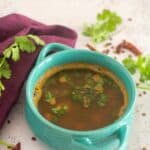
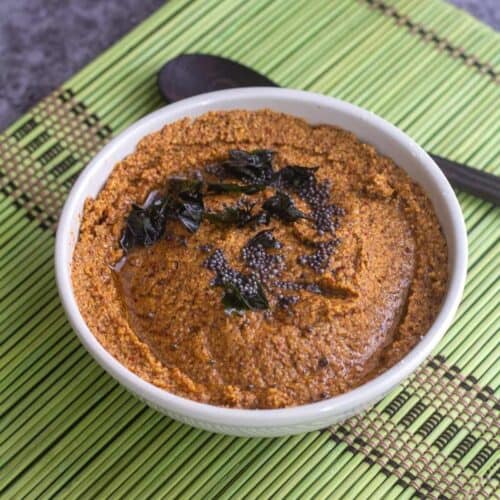
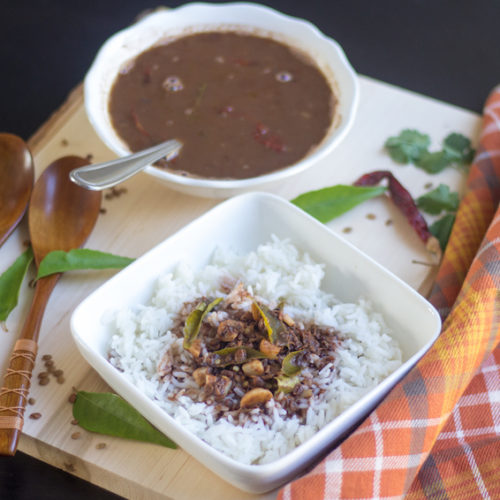
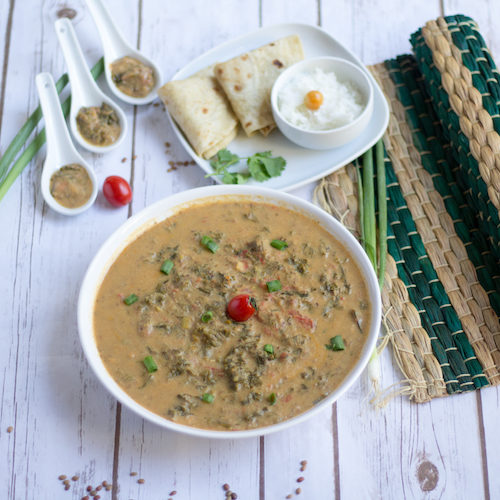
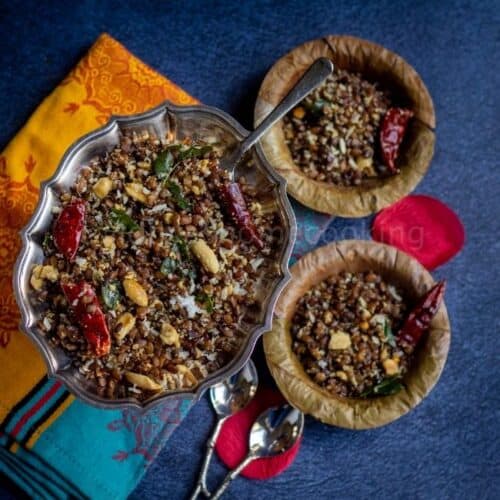
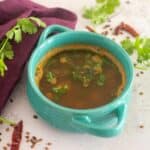

Rasam is loved in our home. This rasam hits the right spots and there is no chance I can deny a bowl of this rasam.
:-) Thanks
Absolutely love this Kollu rasam. I have a package of kollu and was wondering how to use it. Not only the rasam the others like dosa and biriyani will get made soon. Thanks, Vidhya.
Thanks :-)
Love rasam anyday vidhya, that bowl of kollu rasam is so tempting, I can literally feel the warmth of it here! A brilliant recipe !
Thanks Priya.